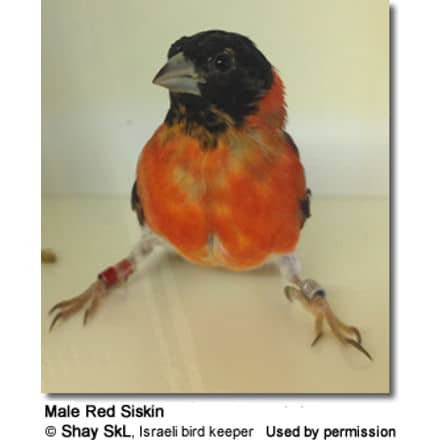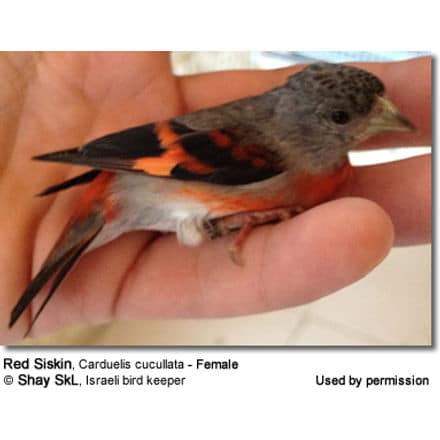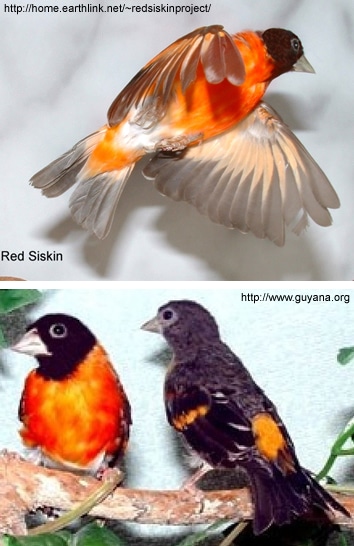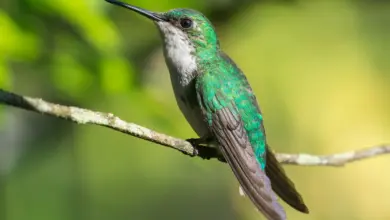Red Siskins
Finch Information … Index of Finch Species … Photos of the Different Finch Species for Identification … Common Health Problems of Finches … Finch / Canary Diet / Nutrition

Distribution / Range:
This finch is a resident breeding bird in tropical South America in northern Colombia and northern Venezuela. The introduced population on Trinidad is believed to be extinct, with no sightings since 1960.
Some hope has been given to this highly endangered species by the discovery in 2003 of a population of several thousand birds in southern Guyana, 1000 km from any previously known colony. Otherwise, the world population is believed to be between 600-6000 pairs.
It was common in the early twentieth century, occurring throughout the foothills of northern Venezuela but has now become extremely rare in a fragmented range.
The Red Siskin is found in open country, forest edges, and grassland with trees or shrubs.
Breeding / Nesting:
The female is believed to lay 3 greenish-white eggs in a grassy cup nest in a tree.
 Description:
Description:
The Red Siskins is about 10 cm long. The male is mainly deep red, with black on the head, throat, flight feathers, and tail tip, and a whitish lower belly and undertail. The female is grey on the head, breast, and upperparts, apart from a red rump and upper tail. The breast is grey with reddish flanks, and the rest of the underparts, the wings, and the tail resemble the corresponding areas of the male. Immature females are paler than the adults, and immature males are brown rather than red.
Call / Vocalization:
The call is a high-pitched chitter and sharp chi-tit like Indian Silverbill, and the male’s song is a musical goldfinch-like melody with twitters and trills.
Diet / Feeding:
Red Siskins eat seeds and are highly gregarious. When they were more numerous they formed semi-nomadic flocks.
Conservation:
The downfall of this siskin has been massive illegal trapping for the cage bird trade. This is an attractive finch with a pleasant song, and its unique coloration for a small finch (most are predominantly yellow) has led to it being used for interbreeding with domesticated Canaries to produce varieties with red in the plumage.
Copyright: Wikipedia. This article is licensed under the GNU Free Documentation License. It uses material from Wikipedia.org … Additional information and photos added by Avianweb.
Please Note: The articles or images on this page are the sole property of the authors or photographers. Please contact them directly with respect to any copyright or licensing questions. Thank you.


 Description:
Description:

